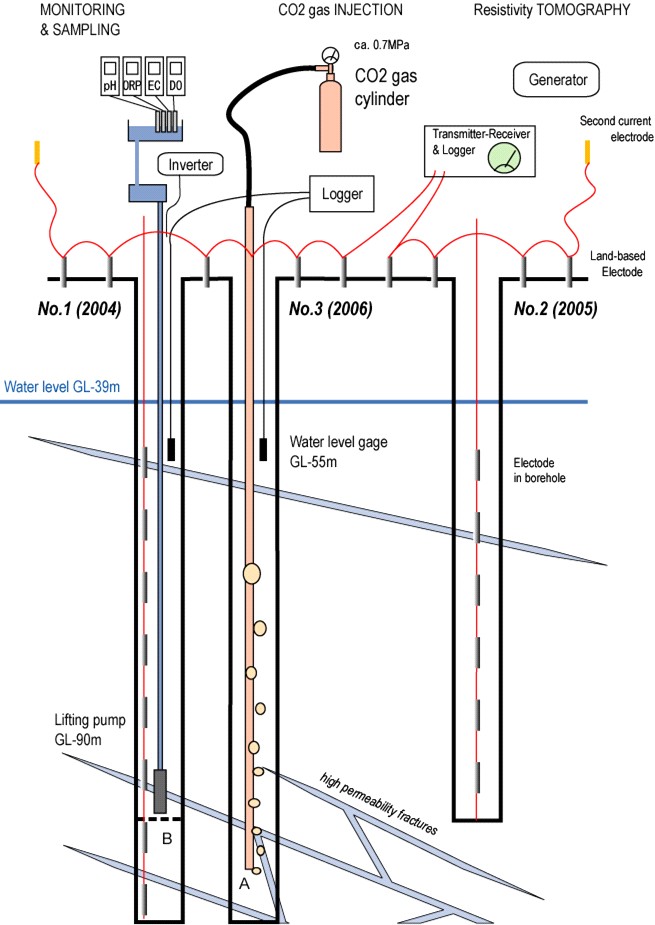Development of a Technology for CO2 Fixation and Sequestration Using Serpentinite
rock mass
<FY2004-FY2006>
Summary
The aim of this study is to develop a technology for CO2
fixation and sequestration using serpentinite rock mass.
1) In-situ Test
The in-situ CO2 injection tests
were carried out at the Iwanaidake, Hidaka-cho, Hokkaido, Japan. The
result of water analysis of flow through tests with various flow rates
and concentrations of CO2 dissolved water showed that clear peaks of Mg and C concentration were seen under the condition of the high CO2 concentration. On the other hand, Mg carbonate was precipitated in groundwater under the condition of low CO2 concentration and high flow rate. These results indicated that groundwater with low pH value was produced when CO2
concentration was high, and dissolved Mg ion was supplied from cracks
when the flow rate was increased. Moreover, the dilution rate in 5 m
between two wells in the in-situ tests was about 16%, and a fixed rate
of CO2 was estimated to be about 5% from the change in the concentration of C in produced water.

2) Laboratory Experiments
The experiments that circulated the CO2
dissolved water to the rock samples with cracks were carried out. In
the experiment that used dunite-origin serpentinite, the Mg carbonate
(giorgiosite) of about 0.008 cm in thickness was generated along
cracks. In the experiments that used harzburgite-origin serpentinite,
the Fe carbonate (siderite) was observed. According to these results, CO2 fixation rate of dunite-origin serpentinite and harzburgite-origin serpentinite were estimated to be 4.6e-10 mol/cm2/s and 0.56 to 2.4e-10 mol/cm2/s, respectively. Moreover, it is showed that the precipitation of the
reaction product determined the rate of reactions between CO2 and serpentinite.
3) Reaction and Transportation Model
Considering the values and the findings obtained by the in-situ tests and
the laboratory experiments, the reaction and transportation model was improved
to be applicable to various serpentinite masses. The potential CO2 injection amount was estimated at 7,000 - 138,000 t/year/well in one injection
depth using this model. It is likely that a massive serpentinite has more
advantage in CO2 injection amount than a foliated serpentinite, and hydraulic fracturing is effective.
4) Efficient CO2 fixation system
Large 43 rock masses were selected from domestic serpentinite rock masses,
and a potential amount of CO2 fixation by serpentinite was estimated using the reaction and transportation model. The CO2 injection amount was estimated at 1.11~1.47 billion tons. Furthermore,
the injection cost excluding separation and transportation cost was estimated at 1,400 - 1,500 yen/t-CO2 for a massive serpentinite rock mass.
Copyright(C) Research Institute of Innovative Technology for the Earth (RITE). All rights
reserved.

